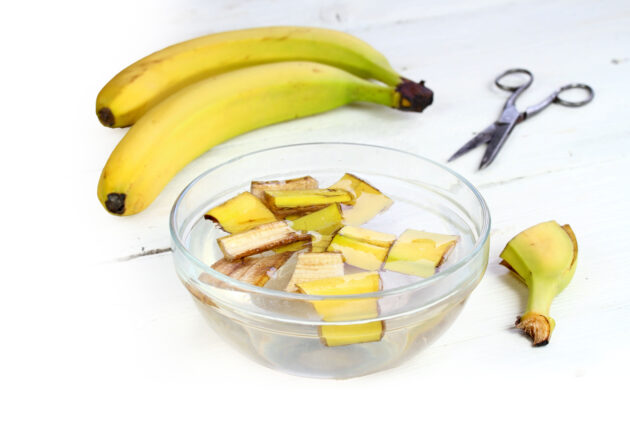
Focus on Food Safety: History of safe use for novel foods
By Dr. Amy Proulx
Food Safety Ingredients & Additives Editor pick food waste Global cuisine Indigenous traditions Novel ingredientsHistory of safe use practices can bring diversity and innovation to the Canadian consumer
 Photo © svehlik/ Getty
Photo © svehlik/ Getty New ingredients are a wonderful opportunity for food product innovation. With so much interest in global culinary exploration, assessment of novelty and food safety becomes a critical factor for successful commercialization and adoption into the Canadian food value chain. Section 4 of the Canadian Food and Drugs Act requires manufacturers to ensure their products are free from contamination and fit for human consumption. Thus manufacturers must perform the due diligence of evaluation of risk and submission of evidence to Health Canada.
Health Canada has a well-defined strategy for evaluating the history of safe use for new food ingredients. First, there needs to be long-term consumption for multiple generations by a large and diverse population. The proposed use must be similar to traditional use and similar to how it’s intended to be used in Canada. Lastly, there should be no history of adverse health effects associated with consumption of the ingredient.
Manufacturers need to provide comprehensive documentation supporting the ‘history of safe use’ claim. This can include geographical regions where the ingredient has been consumed, the duration of consumption, population groups consuming it, traditional uses and F&B applications, typical amounts ingested and any scientific evidence supporting safety. Nutritional composition and digestive impact studies are also highly regarded. Once an application is made, Health Canada will assess the evidence provided to determine if it meets the criteria. Typically these products are then listed on the official List of Non-Novel Determinations for Food and Food Ingredients. There are cases where the history of safe use becomes complex. Using case studies can inform future strategies, so let’s dig into a few examples.
Two-eyed seeing
Foods traditionally used by Indigenous communities are very encouraging. When science interfaces with traditional knowledge, the term, ‘two-eyed seeing,’ is used. This comes from the Mi’kmaq teaching tradition that modern science can interface with indigenous teaching. When two eyes see together, they can see better.
When Health Canada investigates the history of safe use, there needs to be a strong narrative strategy to explain the context and application. Health Canada has historically focused on scientific literature for documenting safe use. In many of these new cases the narrative of safe use comes from indigenous knowledge keepers and elders. Health Canada allows the affidavit and narrative of at least two or more individuals with extensive knowledge of the use of the product as evidence. However, technical documentation is still preferred. With this in mind, it is important that as much technical observation of harvesting and processing be performed in conjunction with the safe use narrative. Have someone make technical measurements of processing parameters, pH, time and temperature, moisture and water activity, storage conditions, etc. to include in the assessment.
Changes in conditions
The biggest challenge with history of safe use narrative is that many indigenous foods are negatively impacted by pollution and climate change. This means the composition and risk profile of the product today may not be the same as it was previously. For example, traditional fish and shellfish harvesting and processing methods are impacted negatively by atypical algae blooms and pollution. History of safe use implies conditions in the past are the same as current, but that is not the case. Using the right technical strategy can overcome potential risk. Technology such as ELISA or lateral flow testing for algal toxins like saxitoxin are essential in this situation.
Food waste reduction is another intriguing case. Many food waste streams are derived from peels, stems and residuals that are immediately adjacent to the food historically consumed. However, the residual material is now being considered as novel food. For instance, been high profile groups like Ikea are promoting banana peels as a vegan substitute for bacon. There is history of safe use, as it is common to consume steamed or boiled bananas with the peel in many countries. The original hazard identification for bananas would presume low risk for residual pesticides because the peel is removed. Banana growers typically treat product by bagging large bunches, and inserting pesticide into the enclosed bag system, or through use of post-harvest dip application. Residual fungicides and organophosphate insect control agents could remain on the peel at levels that would not be observed in the typically consumed product.
History of safe use must be performed with comprehensive hazard identification and risk assessment. It’s still quite possible to reduce and mitigate the risk in this process. History of safe use practices, when done with food safety in mind, can bring diversity and innovation to the Canadian consumer.
Dr. Amy Proulx is professor and academic program co-ordinator for the Culinary Innovation and Food Technology programs at Niagara College, Ont. She can be reached via email at aproulx@niagaracollege.ca.
This column was originally published in the June/July 2024 issue of Food in Canada.
Print this page